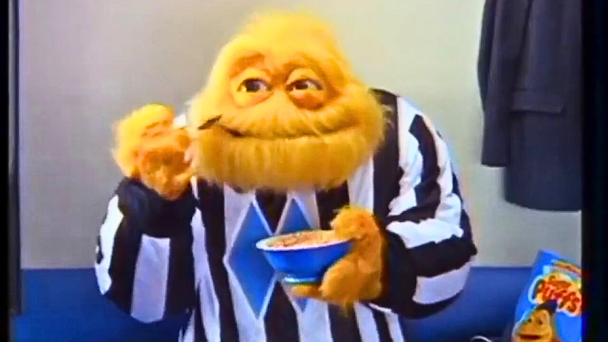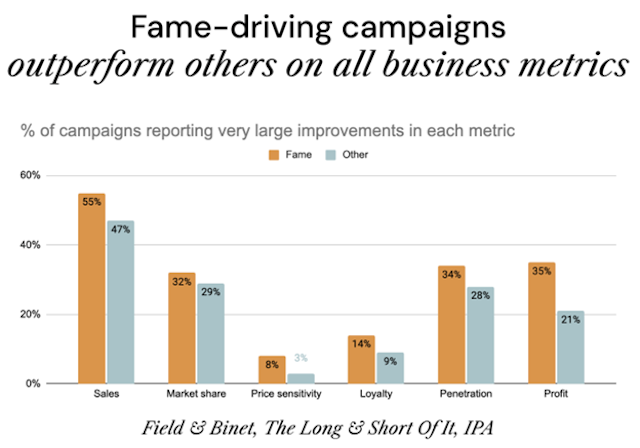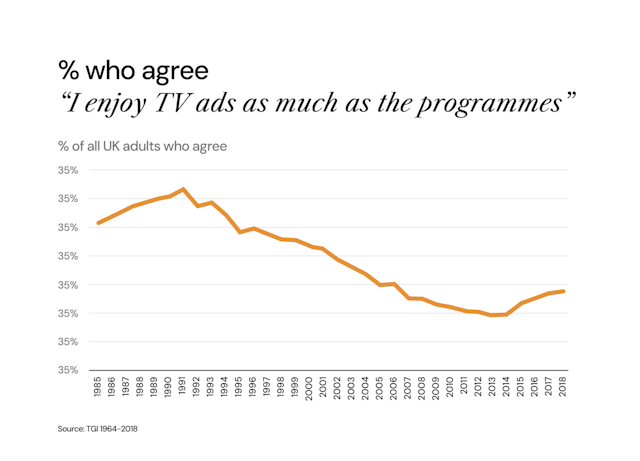Fame never fails. We love to talk about entertaining brands
Sid Lee London’s Rory Natkiel explains how brands that put fame front and center of their objectives tend to get more than their allocated 15 minutes. It’s all about leaving the comfort zone.

I can still remember iconic moments from the famous ads of my childhood… often sports, like Honey Monster at the back post for Newcastle; ‘To perform like Linford, you’ve got to think like Linford’; Lucozade’s ‘Gets to your Thirst, Fast,’ and Accrington Stanley? Who are they?
If none of that makes sense to you, don’t worry; the rest of the piece will. And you’ve probably got a whole load of unorthodox ads that stuck with you, too. But how many of them are recent campaigns? How many have embedded themselves in the collective memory in the same way? Perhaps Nike’s ‘Dream Crazy’ with Colin Kaepernick, but if anything, that’s the exception that proves the rule.
All the famous marketing campaigns running over the last 10 years have been made by insurance comparison sites and high street retailers. Something has happened in the sports marketing industry, meaning we aren’t producing iconic, enduringly famous work.
This is a big problem. Fame is the single most effective objective any campaign can have. Les Binet and Peter Field identified this over 10 years ago in their IPA paper ‘The Long and Short Of It’: whether you’re seeking market share, sales, profit, penetration, loyalty, or reduced price sensitivity, “fame-driving campaigns outperform others on all business metrics.” The Marketing Society found a similarly direct relationship in its multivariate model: “As fame increases, so market share increases.”

Put simply, if you want results, fame trumps everything. At Sid Lee London, we view fame as the goal for everything we do. Now, this may all sound quite obvious. We all want to do famous work, right? But then why are sports brands failing to achieve it?
Fame beats awareness
Firstly, we need to reconsider how we think about fame. For many in sports marketing, ‘fame’ would typically be some combination of approval by our internal stakeholders, a good response when we post our campaign on LinkedIn, positive coverage in the press, and perhaps picking up industry awards.
But we need to remember we are not the audience. The average person doesn’t pay much (if any) attention to brand communications, even if they’re from a team they support. And so being the recipient of a pat on the back from the rest of the marketing industry, as satisfying as it may be, doesn’t mean you’ve achieved true fame.
Binet & Field define fame as “not simply about generating brand awareness. It is about building word-of-mouth advocacy for the brand – getting it talked about, creating authority for the brand and the sense that it is making most of the running in the category.”
And so here we see a crucial definition of fame. It’s about creating campaigns people enjoy, remember, and discuss with their friends, family, and colleagues.
Sure, everyone’s heard of you. But when was the last time you put out a campaign the average consumer could remember a year later?
What about 10 years?
Popularity beats purpose
As an industry, we’ve not only been thinking about fame wrongly but also ignored what makes campaigns famous in the first place. Our industry’s focus on purpose over the past decade has meant many brands have forgotten a much more powerful tool: popularity.
The Ice Bucket Challenge didn’t become a worldwide phenomenon because of its purpose to end ALS. Hundreds of fundraising campaigns a year try to do that. It became famous for a much simpler, perhaps even puerile reason: it’s funny to watch people’s reactions when they have a bucket of cold water poured over their heads.
Earnestness and sincerity have their place, but why did we forget to have fun, be original and most importantly, memorably quotable and popular?
Because let’s not kid ourselves - people know when they’re being marketed to. But they tend not to mind it too much if it’s an enjoyable experience. The fact we’ve forgotten this simple principle is clear when you look at the famous TGI chart showing the decline of people agreeing, ‘I enjoy TV ads as much as the programs.’

In aspiring for a more worthy pursuit than profit, brands have forgotten the kinds of campaigns the public truly enjoys. Humor, lovable characters, well-known tunes, plays on words, quirky accents, ‘aha’ moments: these are the things that have always captured the attention of the public.
By striving for authenticity, we’ve forgotten all these things and defaulted to a style of advertising that desperately tries not to look gimmicky or anything like advertising.
And in doing so, we’ve eschewed many of the things that stand a chance of making our work popular in the first place.
The fame mindset
In his excellent book, Why Does The Pedlar Sing, Paul Feldwick observes that if you look at many of the most famous people in the world, from Victoria Beckham to Donald Trump, from Dr Dre to Ryan Reynolds, they share a few characteristics, an intuitive understanding of their audience, the willingness to take risks, and an ability to react quickly to opportunities.
They have also grown their fame in many different areas of popular culture. Dre moved from the world of hip-hop performance to pop producer and on to consumer tech; Reynolds from Canadian TV to American movies, on to the alcohol industry and then to the world of football ownership.
In each instance, they grow their fame in one area before moving on to another, growing their overall fame as they do. With the Super Bowl and the effect of Taylor Swift’s participation in the US’s biggest sporting event, you can see this principle in action. The worlds of pop music and sport came together like never before to see the 2024 Super Bowl overtake the moon landing as the US’s largest audience and enter the popular conversation in the UK in a way that I (as a die-hard NFL fan) have never experienced before.
In the process, Taylor Swift’s fame has grown even further among the NFL fanbase, while the fame of Travis Kelce, the Kansas City Chiefs and the NFL itself has grown in turn. Beyonce’s move into country music also captures this.
What’s this all got to do with marketing?
Well, it should be clear that fame isn’t built by ‘staying in your lane.’ Campaigns can’t succeed through one channel. You won’t build fame through a social content series alone. For sports marketers, fame is the result of consistently and repeatedly aligning what, at Sid Lee, we call the ‘building blocks of fame’ in surprising ways. You must consistently delight your existing audience while always being ready to seize opportunities to reach new ones.
Want more than 15 minutes?
Our fundamental principle is that the key to commercial success for any brand is to aim for fame. From there, all else good follows. It’s simple.
And while nobody can ever guarantee fame, we can always create the conditions for it. To do this, there are some key questions to ask when you are planning your next campaign:
-
What is entertaining and appealing within this campaign for the end consumer?
-
Is there anything at all - an iconic character, line, piece of music, joke or image - that has a chance of being remembered by the average person (not your boss or your mum) in a year? What about 10 years?
-
Have you integrated a variety of touchpoints, channels and people to execute the campaign in interesting, surprising or new ways?
-
How will this encourage the audience to participate in the idea and spread the word to their networks?
If you have answers to these questions, your brand might live forever.

